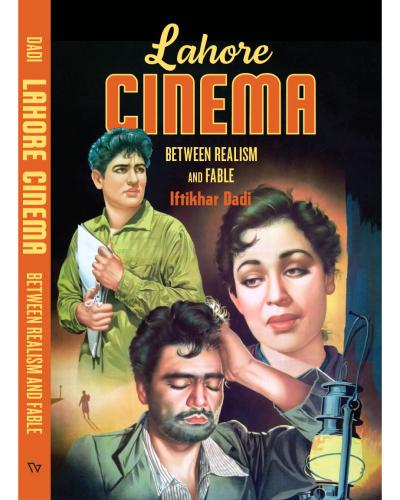 Department Homepage
The College of Arts & Sciences
Department Homepage
The College of Arts & Sciences

Lahore Cinema: Between Realism and Fable
Title:
Lahore Cinema: Between Realism and Fable
Author/ Editor:
Iftikhar Dadi
Publisher:
University of Washington Press
Year:
2022
Commercial cinema has been among the most powerful vectors of social and aesthetic modernization in South Asia. So argues Iftikhar Dadi in his provocative examination of cinema produced between 1956 and 1969—the long sixties—in Lahore, Pakistan, following the 1947 Partition of South Asia. These films drew freely from Bengali performance traditions, Hindu mythology, Parsi theater, Sufi conceptions of the self, Urdu lyric poetry, and Hollywood musicals, bringing these traditions into dialogue with melodrama and neorealism. Examining this layered context offers insights into a period of rapid modernization and into cultural affiliation in the South Asian present, when frameworks of multiplicity and plurality are in jeopardy.
Lahore Cinema probes the role of language, rhetoric, lyric, and form in the making of cinematic meaning as well as the relevance of the Urdu cultural universe to midcentury Bombay filmmaking. Challenging the assumption of popular cinema as apolitical, Dadi explores how films allowed their audiences to navigate an accelerating modernity and tense politics by anchoring social change across the terrain of deeper cultural imaginaries. By constituting publics beyond social divides of regional, ethnic, and sectarian affiliations, commercial cinema played an influential progressive role during the mid- and later twentieth century in South Asia.
The book is available in print and in open access format.
Table of Contents
Preface
Acknowledgments
A Note on Translation and Transliteration
Introduction: The Lahore Effect
Chapter 1: Between Neorealism and Humanism: Jago Hua Savera
Chapter 2: Lyric Romanticism: Khurshid Anwar’s Music and Films
Chapter 3: Cinema and Politics: Khalil Qaiser and Riaz Shahid
Chapter 4: The Zinda Bhaag Assemblage: Reflexivity and Form
Notes
Bibliography
Index